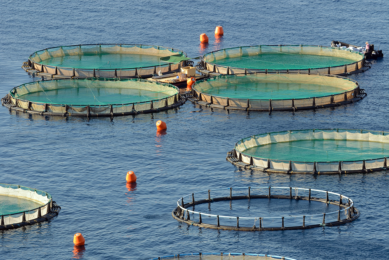Proximate analysis of formulated feed

When fish are reared in high densities, they require high quality, nutritionally complete and balanced feed to grow rapidly and remain healthy. The series of nutritional analyses that are performed are called “proximate analysis”, and this seeks to estimate the different components of feed.
By Dr. M.P .Bhilave, S.B. Nadaf and V.Y.Deshpande, Department of Zoology, Shivaji University, Maharashtra, India
Aquaculture is currently the fastest growing animal production sector in the world and is supported by increased production of formulated supplemental feeds for aquatic animals. Besides, in aquaculture as in other animal production systems, the major objective of feed formulation is to ensure good fish flesh and prevent environmental deterioration, both are related to nutrition. Since the nutrient requirements for all the species under aquaculture practices are not fully understood (species specific feed), it is rather a common practice to extend data from more or less closely related species. Feed should supply all essential nutrients and energy in tune with the body’s needs for the maintenance of physiological functions such as growth, reproduction and health. Feed analysis can accurately measure content of nutrients in formulated feed. With the ‘proximate analysis’ feeds are assessed so that a judgment can be made as to their nutritive value and the part that they can play in meeting an animal’s requirements from different nutrients (Table 1).

Table 1 Analytical results of formulated feed.
Protein – the building blocks
Protein is the most expensive component of fish feed formulation and it can be defined as one that provides the exact balance of amino acids needed for optimum performance and maximum growth. Formulating a feed based on an ideal protein is an effective way of using less protein in the diet to meet amino acid requirements. Maximising the effective use of protein and minimising the amount needed in feeds can substantially reduce production costs, increase farm profitability, and reduce harvest of thrash fish used for fishmeal production. Protein is the first nutrient with the level of energy in the diet that is adjusted to provide the optimum ratio.
Carbohydrates
Carbohydrates represent a large variety of molecules. The carbohydrate most commonly found in fish feed is starch, a polymer of glucose. It is primarily used as an additive to hold feed in universal solvent-water. Carbohydrates are economical and inexpensive sources of energy for fish diets. In fish, carbohydrates are stored as glycogen that can be mobilised to satisfy energy demands. Dietary carbohydrate can exert important indirect influence on intermediary metabolism of fish. Diets used in fish farming contain highly variable amounts of carbohydrates depending on the cultivated species. Even within fish species we find carbohydrate contents of diets which vary substantially. Developments in nutritional physiology, aquaculture technology and economical constraints have triggered use of cheaper feed ingredients with higher carbohydrate contents. Carbohydrates are used in fish diets primarily as energy sources and for their binding properties.
How much fat is too much?
Fats (Omega 3 and 6) are high-energy nutrients that supply approximately twice the energy as proteins and carbohydrates, and typically comprise about 10%-15% of fish diets. Fats supply essential fatty acids and serve as transporters for fat-soluble vitamins.Dietary nutrients are essential for the construction of living tissues. They are sources of stored energy for fish digestion, absorption and growth. Excess energy relative to protein content in the diet may result in high lipid deposition. In fish feeds, to meet their energy requirements, diets with excessive energy levels may result in decreased feed intake and reduced weight gain. Similarly, a diet with inadequate energy content can result in reduced weight gain because the fish cannot eat enough to satisfy their energy requirements for growth. Technically formulated feeds have well balanced energy to protein ratio.
Crude fibre and ash
This is an estimate of the indigestible or slowly digestible fraction of the feed. These components provide the bulk necessary for proper peristaltic action in the intestinal tract.The ash content of the feed contains all the minerals in the feed. It is useful to determine how much of different minerals (potassium, phosphorus, copper, zinc, manganese etc.) are provided by the feed. If an excessive amount of ash is used it can have a negative effect, as fish can assimilate only mineral content, any excess will simply pollute water.
Moisture content
The moisture content of the feed is a key nutrient that is often neglected; feeds with high moisture content are liable to spoil quickly, mainly from fungal contamination. The moulds and more particularly the toxins that are produced by many moulds make the feed unpalatable and can cause illness or even death to the animals. On the other hand, dry feeds, being stable are less palatable.
Article featured in AllAboutFeed Vol 1 Issue 9 2010











